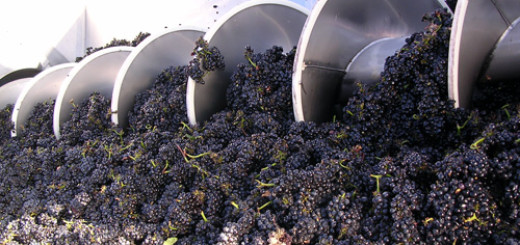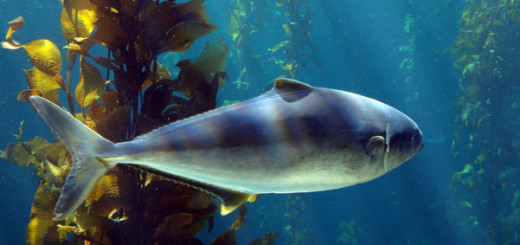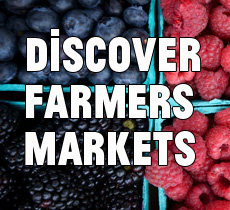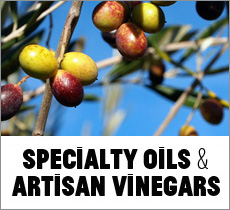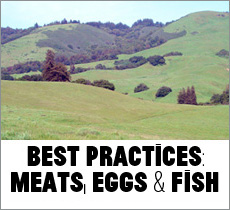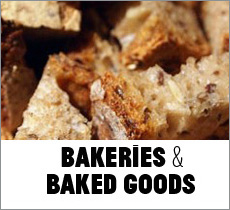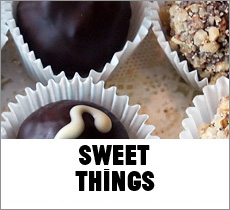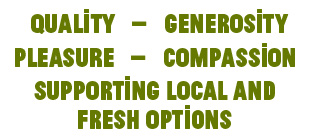Patagonia Foodies Model Strategies for Regenerative Agriculture
Wearing the indestructible cool-weather top I bought over 20 years ago through a Patagonia pro-deal while instructing Outward Bound courses, I stood amidst the overflow crowd of fellow food and nature enthusiasts on July 7 at Great Pacific Ironworks—a.k.a., Patagonia’s Ventura headquarters—and waited for the movie to start. We were here for a local screening of Unbroken Ground, the new 25-minute film by director and Patagonia surf ambassador Chris Malloy focused on food and climate issues.

To Feed America, “There’s got to be a better way”
Obviously, making attractive clothes that continue to perform for years contributes to a company’s overall sustainability metrics, but for Yvon Chouinard, it was simply not enough to counter “fast fashion” trends with sturdy clothes produced with organic raw materials whenever possible. As outdoorsy foodies, we appreciate the expansion of this company’s focus to include agricultural land and food integrity issues with their Patagonia Provisions venture along with their long-time attention to improving ocean health and fighting development pressures on our wildest lands. With Chris Malloy’s artful cinematography, this film gestures toward the life-or-death choices made every day not by brave mountaineers but by busy Americans choosing and preparing their daily meals. Indeed, it’s our lives and the life of the planet that play protagonist in this latest film.
Regenerative agriculture models featured in this film include selective-harvest fishing practices for wild salmon in the coastal northwest; ranchers using indigenous animals on the Great Plains to grow carbon-busting grasses; and nature-based plant breeding in the Midwest and Northwest to integrate desirable perennial traits from grasses with annual grain crops as well as enhance flavors in artisan breads and beverages resulting from grain crops “bred for organic.” Each story provides a model for integrating into commercial efforts ways of working with rather than against nature, a tension which has resulted in our current existential agricultural crisis in America.

Yvon Chouinard introduces the new Chris Malloy film Unbroken Ground in Ventura July 2016
As Chouinard introduced Unbroken Ground—a film that seeks to infuse into commercial agriculture and fishing a sense of sacred that we’ve long accorded to wilderness—this adventurer of the wildest and most vertical parts of the planet acknowledged the short film we were about to experience was very much intended as “a propaganda film” about farming, ranching, and fishing. Team Patagonia wants to help Americans more closely connect food choices with the cascade of climate change signals we are witnessing every day on our planet. Here’s hoping it helps wake people up to how much power they have to change the food system through their own consumer-citizen decisions. Everything is on the table for eating our way toward best practices in a world facing a rapidly evolving climate reality.
Patagonia Provisions Convert Model Agriculture into Healthy Foods
 The growing line of food products presented by Patagonia Provisions integrates the edible output produced from several of these regenerative agriculture models including buffalo jerky, smoked salmon filets, and even an ale made with kernza, a perennial grain developed in Kansas by researchers at The Land Institute supported by funding from Patagonia. Left coast craft beer lovers rejoice: Long Root Ale is delicious and coming to a west coast outlet near you in August 2016.
The growing line of food products presented by Patagonia Provisions integrates the edible output produced from several of these regenerative agriculture models including buffalo jerky, smoked salmon filets, and even an ale made with kernza, a perennial grain developed in Kansas by researchers at The Land Institute supported by funding from Patagonia. Left coast craft beer lovers rejoice: Long Root Ale is delicious and coming to a west coast outlet near you in August 2016.
Commercial fishing ventures, natural plant breeding field experiments, and grass farming with bison ranching that promotes re-carbonizing the soil: these aren’t immediately understood as scenes from an adventure film but, in chaotic and unstable 2016, they are exciting hunter-gatherer, rancher, and farmer food stories about our past and a possible new future. How will the story of American food shift, change, and evolve? Which stories will we choose for our food future? What will we eat along the way?
 A favorite facet of the Patagonia story really appeals to us as citizen-consumers: this benefit corporation works to refine their products to do as little harm as possible to the environment and the people and animals involved in their supply chain. As opposed to some businesses that try to pretend that their products aren’t negatively affecting the ecosystem, Patagonia has faced these problems directly to make changes more in line with their business mission. For example, back in the 1970s, it was becoming apparent that one of Chouinard’s early product successes—iron pitons for rock climbing anchors—was actually resulting in some unsightly scarring and erosion along popular routes. This experience moved them to develop hexes and other “leave-no-trace” rock climbing gear as well as discontinue producing metal pitons. Organic fibers became extremely important for their clothing line once they learned about how much pollution was involved with producing conventional cotton. Of course, they use fabrics produced with petroleum to make excellent all-weather gear, so perhaps that awareness helps them push the edge with their sustainable fabrics of organic cotton and hemp. Instead of ignoring the problems, this company has repeatedly taken responsibility for less-than-optimal realities with how they produce their clothing products and has enacted change.
A favorite facet of the Patagonia story really appeals to us as citizen-consumers: this benefit corporation works to refine their products to do as little harm as possible to the environment and the people and animals involved in their supply chain. As opposed to some businesses that try to pretend that their products aren’t negatively affecting the ecosystem, Patagonia has faced these problems directly to make changes more in line with their business mission. For example, back in the 1970s, it was becoming apparent that one of Chouinard’s early product successes—iron pitons for rock climbing anchors—was actually resulting in some unsightly scarring and erosion along popular routes. This experience moved them to develop hexes and other “leave-no-trace” rock climbing gear as well as discontinue producing metal pitons. Organic fibers became extremely important for their clothing line once they learned about how much pollution was involved with producing conventional cotton. Of course, they use fabrics produced with petroleum to make excellent all-weather gear, so perhaps that awareness helps them push the edge with their sustainable fabrics of organic cotton and hemp. Instead of ignoring the problems, this company has repeatedly taken responsibility for less-than-optimal realities with how they produce their clothing products and has enacted change.
The Most Selective Fishery in North America
Their Patagonia Provisions smoked salmon filet is produced with an attention to the most careful fishing principals as to seem almost Portlandia-esque. With an underwater false reef presenting the salmon with an optical illusion that drives them closer to the surface, these fishermen with Lummi Island Wild rely on the visual. They observe the approach of a salmon run and then use ancient tools and individual handling to sustainably harvest wild fish without wasteful by-catch. Once a lookout spots a clutch of wild salmon heading to sea, the signal rings out, and quickly yet gently the fish are lifted live from the water with a purse seine netting system and processed with attention to flavor and nutrition. Non-target species caught up with the salmon are slipped live back into the bay to keep marine diversity high. If this low-impact fishing system sounds extreme, it makes good sense for a future with fish after witnessing the cumulative impact of what the British fishing industry refers to as “discards.”
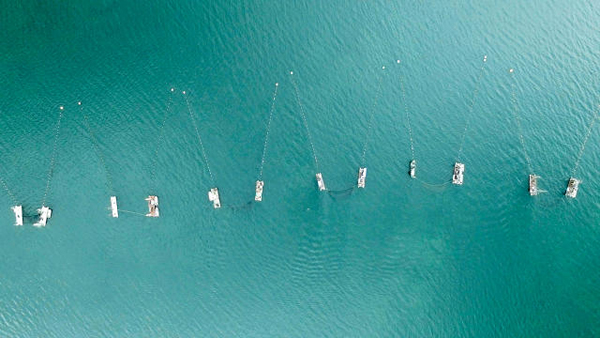
Aerial view of the Lummi Island Wild armada, a selective-harvesting wild sockeye salmon operation out of Bellingham, Washington (photo: Patagonia)
Central Coast Sustainable Fishing Leaders
 We’re haunted by the sad scene in Jiro Dreams of Sushi after the tuna auction where it continues to dawn on this master sushi chef and his family they will likely face a future with diminishing tuna populations. Let’s none of us have to live in a World Without Fish. The Central Coast of California provides several examples of best practices in sustainable seafood production for consumers. San Luis Obispo County’s Morro Bay is home port for the Capriccio that lands sustainably fished “Caught Hook & Line One at a Time” premium albacore tuna. In the Northern Central Coast, Real Good Fish community supported fishery out of Moss Landing promotes sustainable fishing practices and eating the local if less-familiar bounty from the biologically rich Monterey Bay. They also strive to reconnect consumers with the people who catch the fish for their tables, adding faces to the fish and shellfish.
We’re haunted by the sad scene in Jiro Dreams of Sushi after the tuna auction where it continues to dawn on this master sushi chef and his family they will likely face a future with diminishing tuna populations. Let’s none of us have to live in a World Without Fish. The Central Coast of California provides several examples of best practices in sustainable seafood production for consumers. San Luis Obispo County’s Morro Bay is home port for the Capriccio that lands sustainably fished “Caught Hook & Line One at a Time” premium albacore tuna. In the Northern Central Coast, Real Good Fish community supported fishery out of Moss Landing promotes sustainable fishing practices and eating the local if less-familiar bounty from the biologically rich Monterey Bay. They also strive to reconnect consumers with the people who catch the fish for their tables, adding faces to the fish and shellfish.
Regenerative Grazing: Re-Carbonize the Soil with Ruminants
Unbroken Ground also profiles Dan and Jill O’Brien of Wild Idea Buffalo Company at their Cheyenne River Ranch near Rapid City, South Dakota. They transitioned from raising beef cattle to ranching bison on the harsh, beautiful Great Plains. While the climate was often too intense for cattle, the bison are naturals with thriving on the wide open prairie. The O’Briens describe how they consider themselves grass farmers, really, who use the bison’s grazing habits to stimulate ever longer underground root systems in the prairie grasses. These extensive plant root systems do a better job storing carbon than poorly managed grasslands featuring grasses that are just barely hanging in there. Regenerative grazing encourages a grassland to grow deeper roots after an appropriate period of ruminant browsing without over grazing.
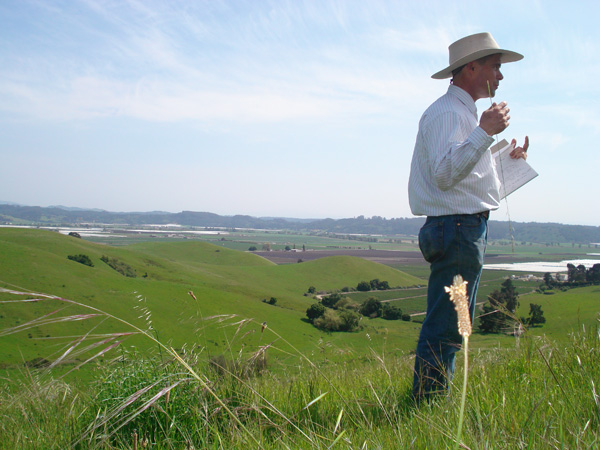
Joe Morris leads a tour of the healthy grasslands leased by his San Juan Bautista company, Morris Grassfed Beef
We first heard about the connection between impacts from cloven-hoofed animals, plant root system length, and carbon sequestration via subsurface root systems from John Wick of the Marin Carbon Project in April 2010 at the spring meeting of the Central Coast Rangelands Coalition. As newbie foodies, we attended with animal science professor Dr. Rob Rutherford, some agriculture grad students from Cal Poly, and a collection of Central Coast farmers and ranchers. The meeting took place at one of the ranches near the San Andreas Fault managed by San Juan Bautista rancher Joe Morris of Morris Grassfed Beef. In addition to managing for healthy grasslands, Morris Grassfed Beef simulates ancient migration patterns in modern California by trucking their cattle to the Sierra foothills every summer.
It’s all connected: this holistic grazing grass-fed beef operation also lent the power of their farmer-to-consumer communication model to help pass a San Benito County fracking ban in November 2014. While a fracking ban in Santa Barbara County went down to defeat that year, small but mighty San Benito County—home to some of the oldest vineyards in the state with some of the most limited rainfall in the northern Central Coast—passed a decisive ban on this polluting extraction practice. Thank you organizers, ranchers, winemakers, citizens, and voters!
Plant Breeding vs. Genetic Engineering
 There was a mildly wearied tone in Wes Jackson’s voice when he prefaced his remarks about the plant breeding trials they’re conducting now at The Land Institute in Salina, Kansas. He explained that their breeding strategies are not “genetic engineering” as pursued by the agro-chemical industry in the nation’s “food” sector. There’s a patience and natural deliberation when using nature’s tools for cross-breeding experiments such as Kernza, a naturally-bred cross of a perennial grass and an annual wheat that does not require annual tilling, thereby reducing topsoil loss through wind and water erosion. Kernza joins with organic barley, yeast, and northwest hops in their new Patagonia beer, Long Root Ale in honor of the hardworking grasses that, if we just exposed them to enough cloven hoof impacts, could help ease our carbon-overload planetary blues. Jackson sounds as if he spends a fair bit of his time educating people about the dramatic difference between natural plant breeding and lab-based genetic modifications that alter a plant’s genetic structure so farmers can spray herbicides and pesticides directly on the fields.
There was a mildly wearied tone in Wes Jackson’s voice when he prefaced his remarks about the plant breeding trials they’re conducting now at The Land Institute in Salina, Kansas. He explained that their breeding strategies are not “genetic engineering” as pursued by the agro-chemical industry in the nation’s “food” sector. There’s a patience and natural deliberation when using nature’s tools for cross-breeding experiments such as Kernza, a naturally-bred cross of a perennial grass and an annual wheat that does not require annual tilling, thereby reducing topsoil loss through wind and water erosion. Kernza joins with organic barley, yeast, and northwest hops in their new Patagonia beer, Long Root Ale in honor of the hardworking grasses that, if we just exposed them to enough cloven hoof impacts, could help ease our carbon-overload planetary blues. Jackson sounds as if he spends a fair bit of his time educating people about the dramatic difference between natural plant breeding and lab-based genetic modifications that alter a plant’s genetic structure so farmers can spray herbicides and pesticides directly on the fields.

He’s got a dirty mouth because, as a seed, he eats dirt
Plant breeding and genetic engineering couldn’t be more different, as explained by an organic seed in this mildly NSFW clip produced by SeedMatters.org, a part of the Cliff Bar Family Foundation. Quite the coincidence that a doctor with the Hoover Institution at Stanford University used Cliff Bar in a high profile LA Times op-ed take down to make the ridiculous claim that GMOs sprayed with “probable carcinogen” glyphosate are safer than organic granola bars. Looks like Mr. Seed touched a nerve when he likened “chem seeds” to athletes on performance-enhancing drugs using chemical cocktails that result in soil destruction. The op-ed author never once mentioned glyphosate which is what advocates for GMO labeling want to try and avoid.
Until now, crop scientists have focused on the conventional agriculture sector with their breeding programs. Amazingly, “We have never specifically bred [edible grains] for organic farmers,” observed a representative with The Bread Lab in Mount Vernon, Washington. This classical plant breeding program with Washington State University develops grain strains for the best flavor and nutrition whether artisan baking, malting grains, brewing beer, or distilling the good stuff.
Building New Farmers Who Understand Ecosystem Function
Beyond this hopeful short film which will be released on August 1, we see successful models around the world for growing independence through growing food. The spectacular success of repairing the ecosystem of the Loess Plateau in China has reclaimed from desertification an area the size of Belgium. The before and after images of this project are amazing. A good use of World Bank funds: help people emerge from poverty!
Don’t have half a trillion dollars for such a large project? Work on your individual independence quotient by using low cost tools with high returns for your market gardener project: get to work with hand tools rather than go into debt for a tractor burning fossil fuel. JM Fortier and the small team who run their organic 1.5-acre farm in Quebec have been making $150,000 per year with the labor of four people and lots of planning. They even go on vacations and have a life: sweet! Fortier so much wants to help get young people into farming, he’s written a book outlining all the smart steps where they essentially apply industrial engineering principles to the farm layout to save time and money. There’s also a documentary following their progress through the growing season.
Who are the regenerative agriculture experts in your community? How are farmers in your region dealing with effects of climate change? Who fights for farmers in your world?
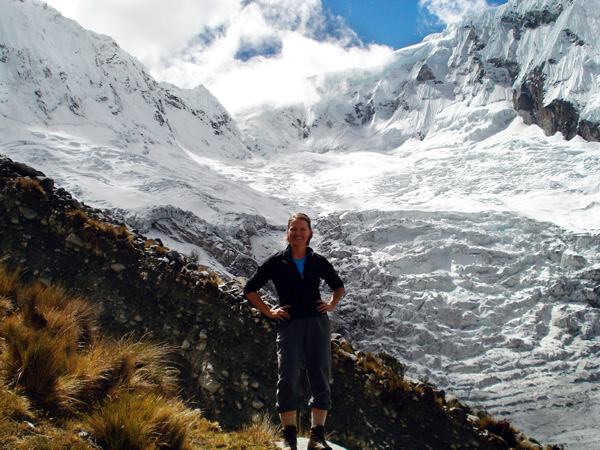
In my favorite top on my favorite trip: acclimatizing in the mountains near Huaraz in northern Peru

